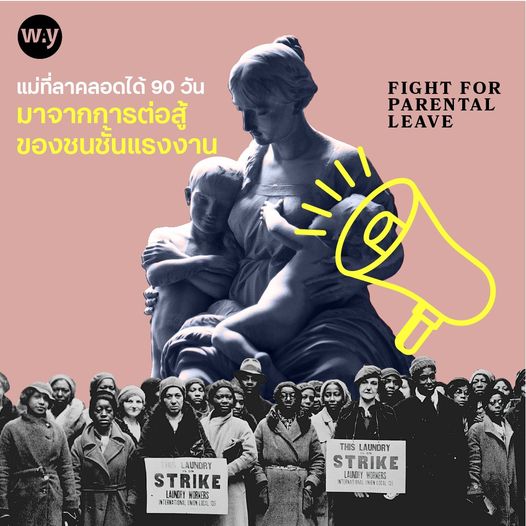Mothers who get 90 days of maternity leave come from the struggle of the working class
The 90-day maternity leave law was enforced in 1993. Before that, a female worker getting pregnant would directly impact employment, with negative effects outweighing the positive.
When pregnant, some women were fired from their jobs, some had to hide their pregnancy by binding their bellies, and some chose to have an abortion because having a child might mean losing their job. Some didn’t even dare to see a doctor because taking leave would result in losing their diligence allowance, inevitably affecting the health of the mother and the unborn child.
It’s true that before 1993, the law stated that maternity leave could be taken for 60 days, but only 30 days were paid. Given the economic conditions and family backgrounds that weren’t very strong, many returned to work just 15 days after giving birth. Of course, their bodies hadn’t recovered enough to be ready for work. The demand for better maternity leave rights continued to be pushed forward.
Until 1992, the demand for 90 days of maternity leave was successful, but it was only a partial success. Female government officials received the right to 90 days of maternity leave with full pay, from previously receiving only half or 45 days. The demand for equal enforcement was met with the response, “Don’t be greedy.”
Unequal rights led to the anger of the labor sector, especially over 500 female labor unions, who continuously gathered to demand and pressure the relevant agencies.
On March 7, 1993, the labor network grew stronger, with thousands of workers submitting a letter to Chuan Leekpai while he was Prime Minister, but there was no response from the government.
On April 25, 1993, the labor network gathered in front of the Government House decided to go on a hunger strike and increased pressure by cutting themselves to protest against General Chavalit Yongchaiyudh, the Minister of Interior at the time, who said that the protesting workers were not really pregnant.
On April 27, 1993, the government finally agreed to the demands, granting 90 days of maternity leave with full pay, leading to the dispersal of the protesters.
On May 1, 1993, the government officially announced the enforcement of the maternity leave law.
Medically, the right to 90 days of maternity leave is very significant, especially considering postpartum recovery. For natural childbirth, mothers need about 2 weeks to recover. If delivered by surgery, the recovery period increases to 6-8 weeks. Doctors recommend that mothers exert themselves minimally during the first 3 months after childbirth. These 3 months are crucial for mothers to have direct interaction with their babies. After this period, the baby will start to sleep longer, allowing the mother to rest or return to work.
References
https://tinyurl.com/2muxtek9
https://tinyurl.com/yc4s496d
https://tinyurl.com/yc3kbzua
Source: Facebook Fanpage – Rsathai

